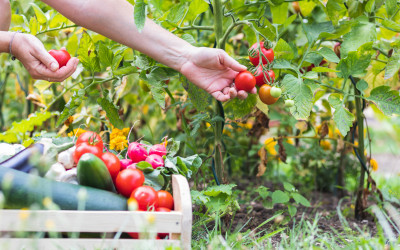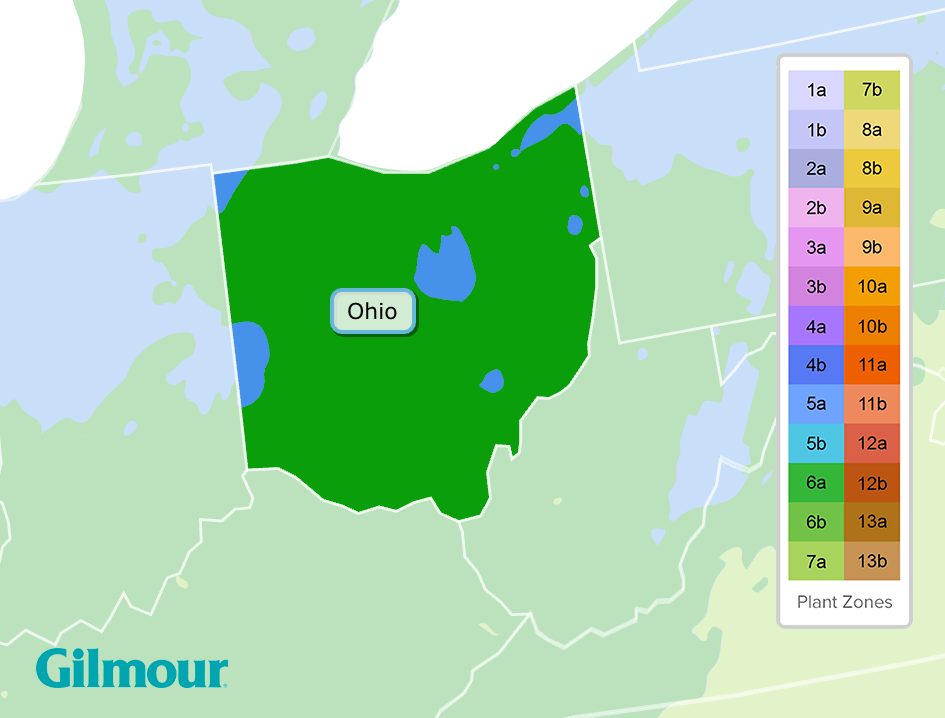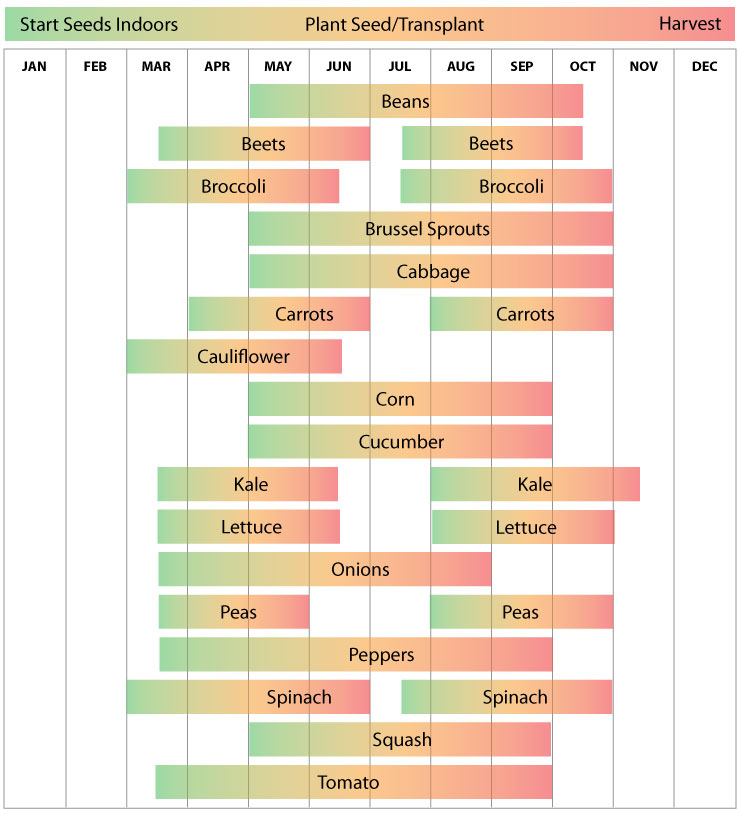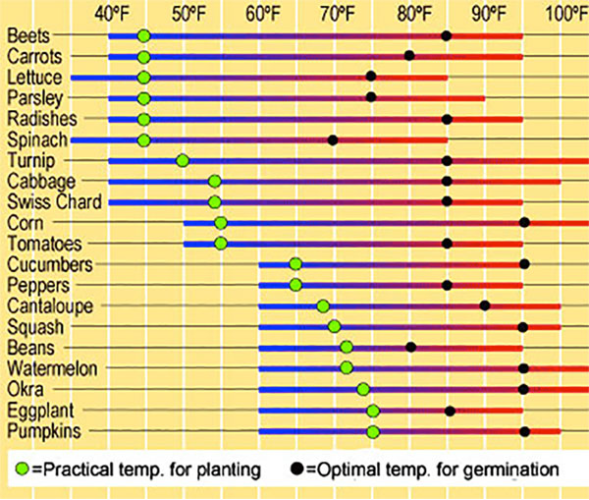Creating a vegetable garden planting schedule is an important part of gardening success. Fortunately, the Dayton area (and most of Ohio) have great planting conditions and reliable planting and harvesting seasons. You can keep a garden in Ohio with a wide range of crops that are all able to thrive.
For first-time vegetable gardeners, there are two key components to consider: learning about what factors will affect your gardening schedule and staying organized so you avoid missing important steps. Here, we’ll cover both.
Read on for our guide to creating a vegetable garden planting schedule!
Quick Takeaways
- Important factors to be considered when creating your vegetable planting schedule include hardiness zones, soil temperatures, and frost dates.
- Ohio sits firmly in the Zone 6 hardiness zone with some small areas in Zone 5.
- Vegetable planting season for Ohio begins in March and extends to November.
- Staying organized can help first-time gardeners focus on their crops and avoid missing important steps.
- Some great ways to stay organized include creating a gardening design, keeping a gardening journal, organizing seeds, and maintaining a task schedule.
What to Know About Making a Vegetable Planting Schedule
Hardiness zones help gardeners determine how well plants are likely to survive in a particular area. Zones depend on a location’s minimum winter temperature. Ohio is a very plant-friendly state, with reliable seasonal weather that doesn’t include many extremes.
Most of Ohio falls in Zone 6 with a few areas in Zone 5, and minimum temperatures across these zones range from -15 to 0 degrees Fahrenheit. Most vegetables are very able to thrive in both Zones 5 and 6. Some of the best vegetables to grow based on zone include tomatoes, corn, melons, beans, strawberries, lettuce, and other greens.
Even within the same zone, vegetables have different ideal planting times. A comprehensive view of the Zone 6 vegetable planting schedule can be seen on the graph below.
Soil Temperatures
Vegetable gardeners must also pay attention to soil temperatures since different vegetable plants require different soil temperatures in order to survive. Soil temperatures range with the weather and can be taken most accurately with a soil thermometer. Soil temperature should be taken at the same time each day for a few days in a row.
The graph below shows the practical and optimal soil temperatures for different vegetable crops.
Frost Dates
Frost dates are important for your vegetable garden planting schedule because many tender vegetables cannot survive a frost. To ensure they don’t experience a frost, gardeners refer to average frost dates based on historical data for their location.
Using average frost dates can decrease the likelihood of your plants experiencing a frost, but it’s not a guarantee. Gardeners should track the weather and prepare to provide protection from frost when necessary using plant covers.
In Dayton, Ohio, frost risk exists from October 19th to April 22nd, with nearly guaranteed frost from November 9th to April 2nd, and (nearly) guaranteed absence of frost from May 6th to October 3rd.
How to Plan and Stay Organized
Create a Gardening Design
A garden design is a planned layout for your garden made before you plant anything. Creating a garden design can help you utilize the space you have for gardening to its fullest potential.
For vegetable gardeners, using trellises and fences can be extremely useful so vining crops grow upward rather than across the ground. Some vegetable plants that grow well with this method include pole beans, peas, cucumbers, and tomatoes. Using fences and trellises to encourage upward growth will allow you to grow more food, harvest more easily, grow cleaner crops, and reduce insect damage.
When planning your garden, keep in mind that vegetable garden crops should also be grown close together. While you need to leave enough room to harvest the crops, keeping them close maintains soil moisture and helps to control weeds.
Keep a Gardening Journal
Keeping a garden journal where you record information like your planting calendar, garden design, and other notes about what worked well and what didn’t can help you build a resource to use in the future. It also ensures you won’t repeat avoidable mistakes.
There is no specific right or wrong way to keep a garden journal; instead, it should be about what feels right for you to record. You can make your journal a detailed account of your gardening experience or you can decide to use it simply to jot down important bullet points you want to remember for next time.
Either way, for first-time gardeners, a garden journal can be a great way to maintain a record, track your progress over seasons, and create a learning resource.
Organize Your Seeds and Plant Tags
As you expand your vegetable garden, you’ll want to organize your seeds and plant tags efficiently to ensure you’re planting things in the right places and keeping accurate track of your inventory. Of note, no matter how seeds are organized, they should be stored in a cool, dark location.
There are many ideas out there for keeping your seeds organized. Some of the most commonly used methods include photo albums with labeled plastic pockets, using clear storage containers like glass jars, keeping seeds in alphabetically filed folders, or storing them in jewelry or fishing boxes.
Great Ways to Organize Garden Seeds (video)
Maintain a Task Schedule
Gardening requires many tasks and chores that include not just planting and harvesting but organizing, pruning, weeding, mulching, composting, and other maintenance tasks to ensure your plants stay well and continue to thrive.
Maintaining a task schedule can be part of your garden journaling process or it can be created and maintained as a separate document. We find the latter to be helpful for first-time gardeners since they’re still learning many of the tasks and schedules that will eventually become second nature with more experience.
Looking for your perfect home in the Dayton area? Contact Oberer Homes today to learn how we can help you find (or build!) it.
Share this Post



